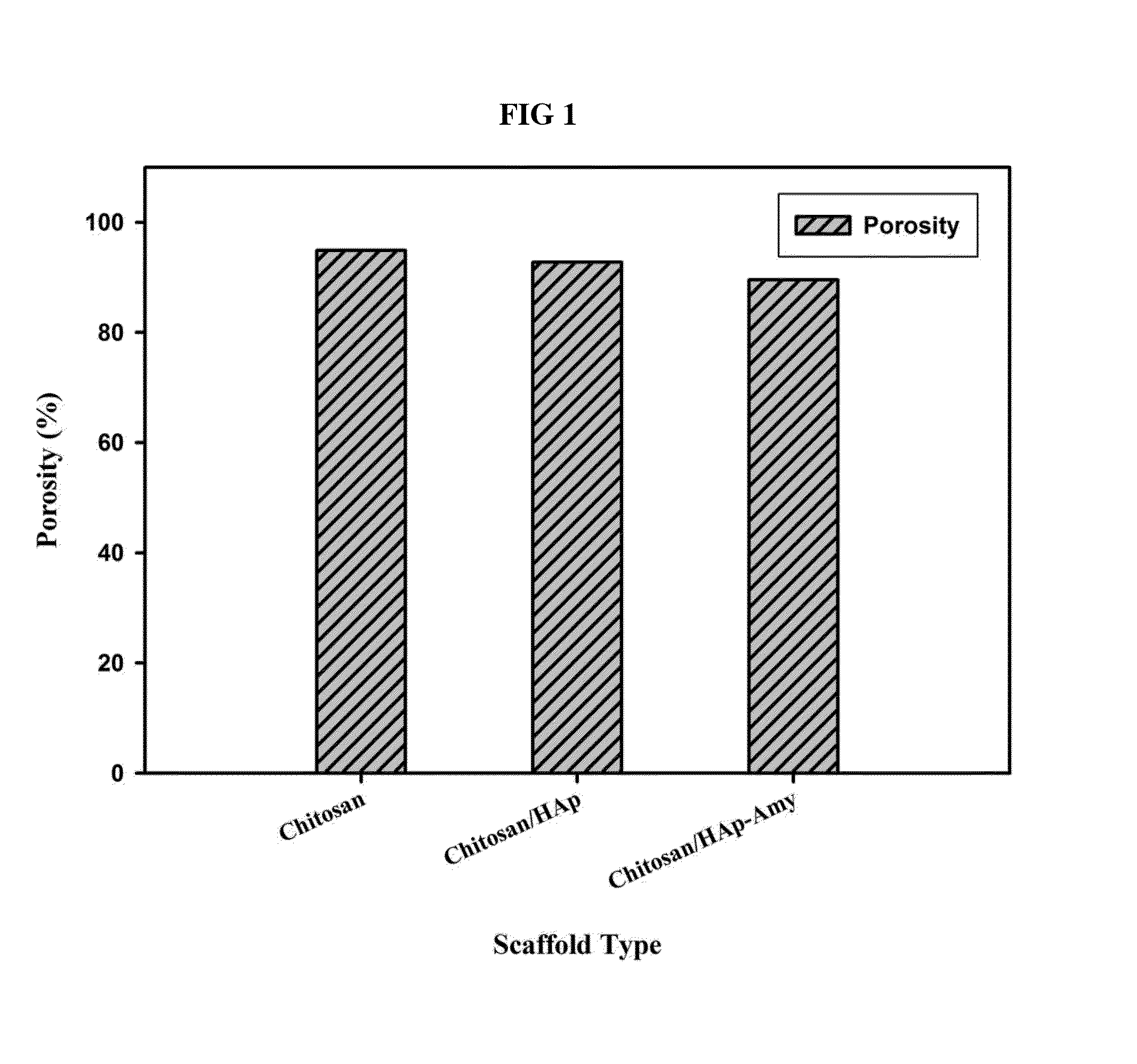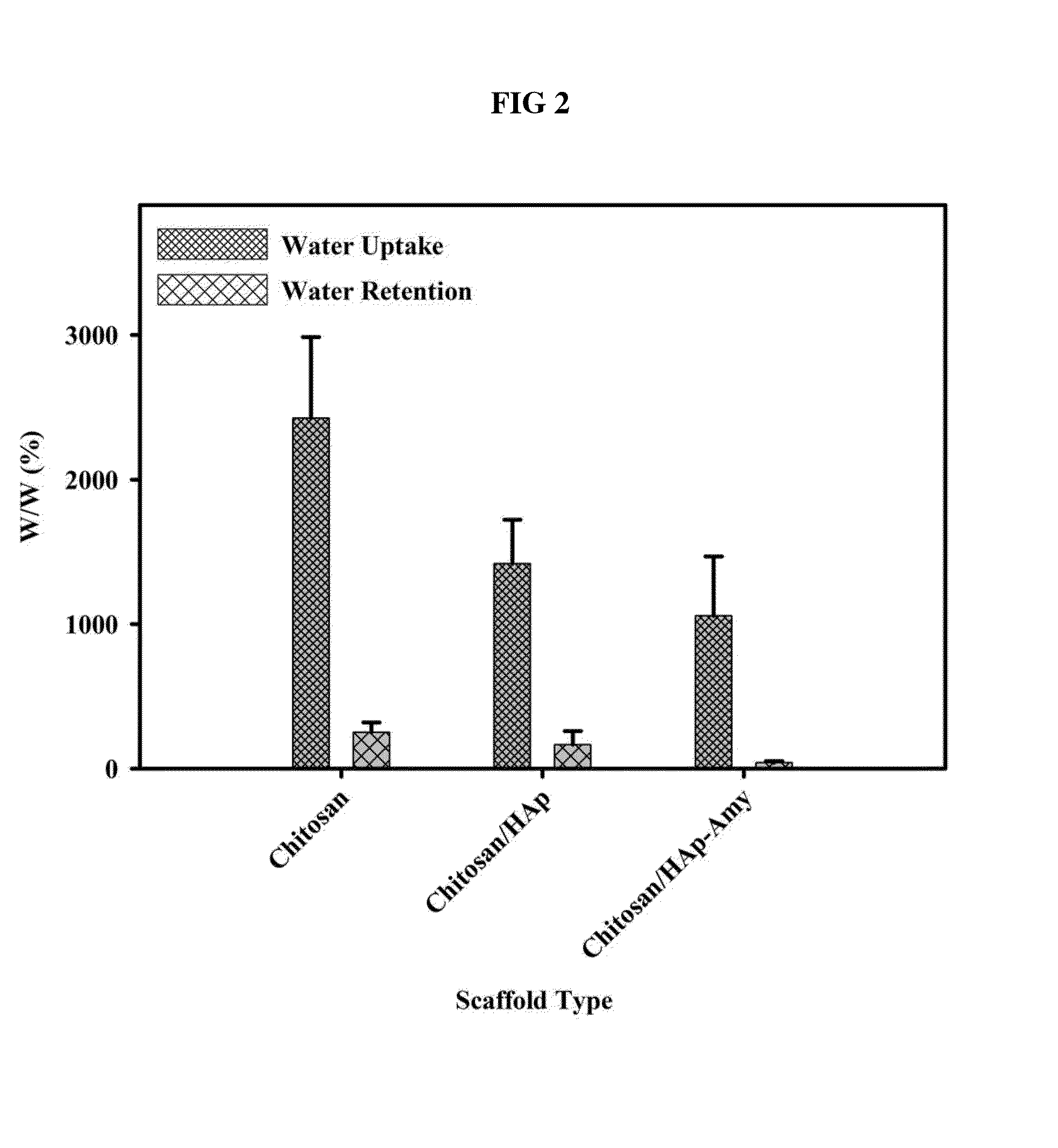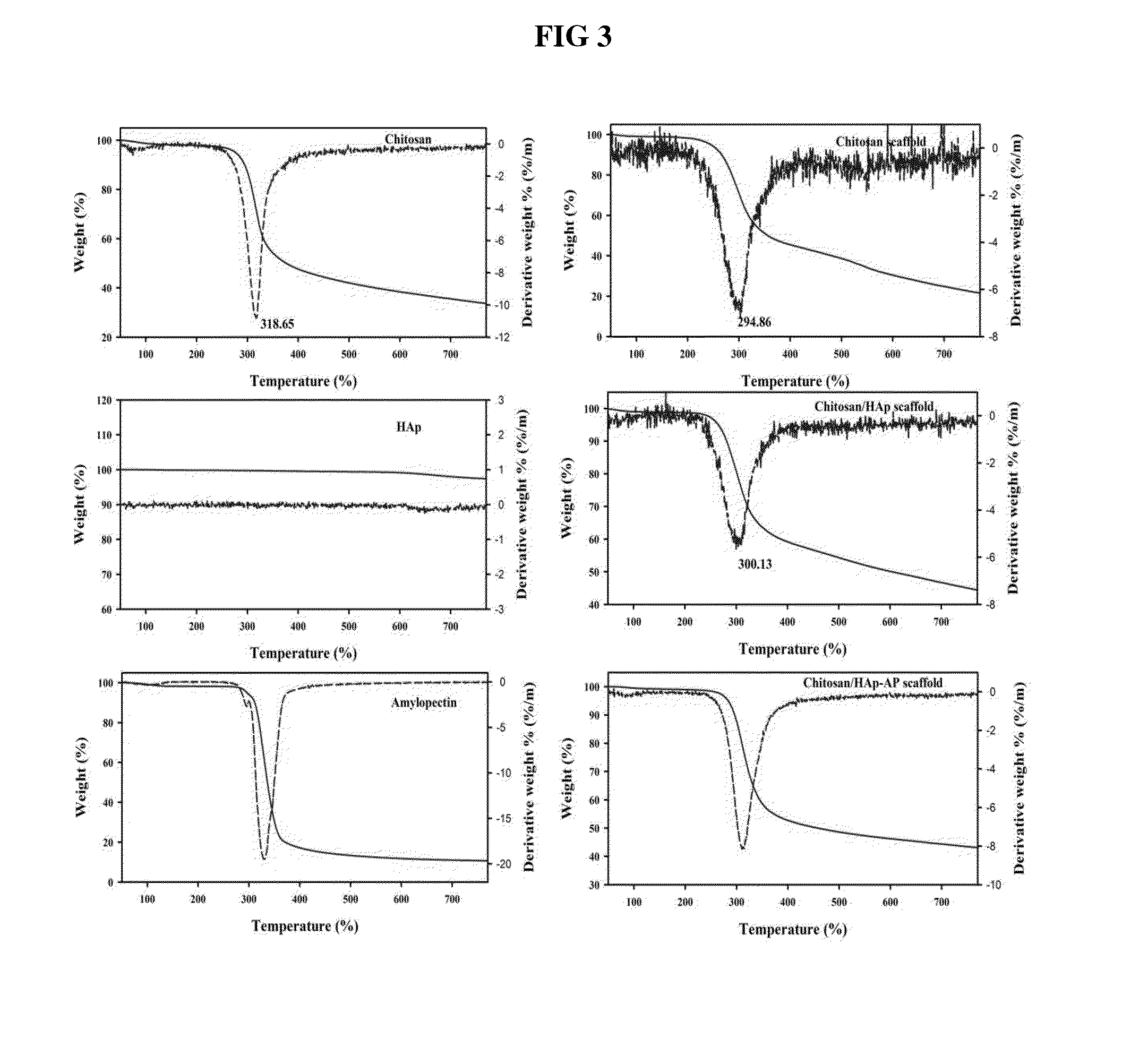Porous scaffold for tissue engineering and preparation method thereof
a tissue engineering and porous technology, applied in the field of porous scaffolds for tissue engineering, can solve the problems of difficult tissue cell growth to the center, and achieve the effects of superior thermal stability and mechanical strength, efficient cell proliferation and transmission, and superior biocompatibility
- Summary
- Abstract
- Description
- Claims
- Application Information
AI Technical Summary
Benefits of technology
Problems solved by technology
Method used
Image
Examples
example 1
Preparation of a Scaffold According to the Present Invention
[0065] Materials
[0066]In the present invention, chitosan, neutral HAp and AP were used to prepare a scaffold. Chitosan with middle molecular weight (˜310 KDa, deacetylation 90%) was purchased from Kitto life Co., Ltd (South Korea). HAp was isolated from the bones of Thunnus obesus by thermal sintering, and amylopectin was purchased from Sigma Chemicals.
[0067]Human osteocyte-like cell line (MG-63) was provided by ATCC (Manassas, Va., USA), and DMEM (Dulbecco's Modified Eagle's Medium) was provided by Gibco BRL, Life Technology. MTT (3-(4,5-dimethyl-2-yl)-2,5-diphenyltetrazolium bromide) was purchased from Molecular Probes (Eugene, Oreg., USA), and Bisbenzimide Hoechst 33342 stain was purchased from SigmaAldrich (St. Louis, Mo., USA). Glutaraldehyde 25% was purchased from Junsei Chemical (Japan). Further, all the reagents used in the experiment were analytical grade.
[0068] Preparation of Chitosan Scaffold
[0069]First, 2.5 g of...
example 2
Gross Examination of Scaffold
[0075]Chitosan and conjugates scaffolds thereof prepared using freeze drying method were observed as stiff and elastic from a gross examination.
[0076]Further, when all the scaffolds are submerged in 0.1M PBS, chitosan scaffold was more supple and swelled faster compared to chitosan / HAp and chitosan HAp-AP scaffolds. This is because addition of HAp and AP keeps chitosan tissue firmer.
[0077]Chitosan and chitosan / HAp scaffold were colorless, while chitosan / HAp-AP scaffold appeared white due to dispersion of AP in the polymer and ceramic matrix.
example 3
Measurement of Porosity
[0078]Porosity is the most important parameter in a bone tissue engineered scaffold. Porous scaffold material plays a very important role in the tissue engineering due to maintenance of tissue volume, provision of temporary mechanical function, cell adhesion and proliferation and transmission of genes and proteins. The total porosity of each of the scaffolds prepared at was measured using liquid displacement method.
[0079]First, volume of ethanol and dry weight of the scaffold were measured. Next, after keeping the scaffold in dehydrated alcohol for 48 h until the scaffold absorbed alcohol and saturated, the weight of the scaffold was measured again. Lastly, the porosity of the sample was calculated by:
Porosity=(V1−V3) / V2−V3
[0080]where, V1 denotes initially-measured weight of scaffold,
[0081]V2 is a sum of weights of ethanol and scaffold submerged therein, and
[0082]V3 is a weight of ethanol removed of scaffold.
[0083]Three samples were analyzed regarding all th...
PUM
| Property | Measurement | Unit |
|---|---|---|
| Fraction | aaaaa | aaaaa |
| Time | aaaaa | aaaaa |
| Pore size | aaaaa | aaaaa |
Abstract
Description
Claims
Application Information
 Login to View More
Login to View More - R&D
- Intellectual Property
- Life Sciences
- Materials
- Tech Scout
- Unparalleled Data Quality
- Higher Quality Content
- 60% Fewer Hallucinations
Browse by: Latest US Patents, China's latest patents, Technical Efficacy Thesaurus, Application Domain, Technology Topic, Popular Technical Reports.
© 2025 PatSnap. All rights reserved.Legal|Privacy policy|Modern Slavery Act Transparency Statement|Sitemap|About US| Contact US: help@patsnap.com



